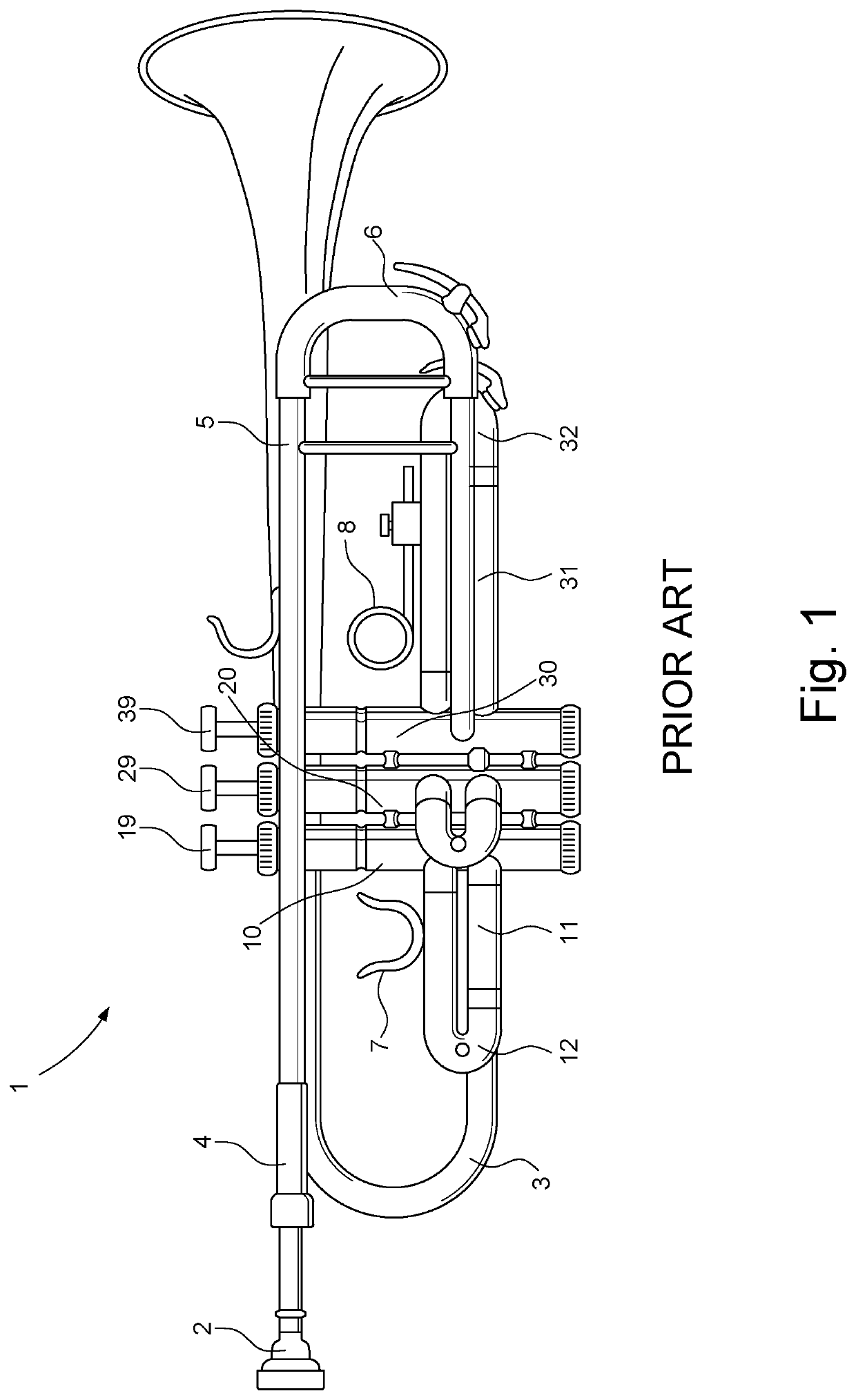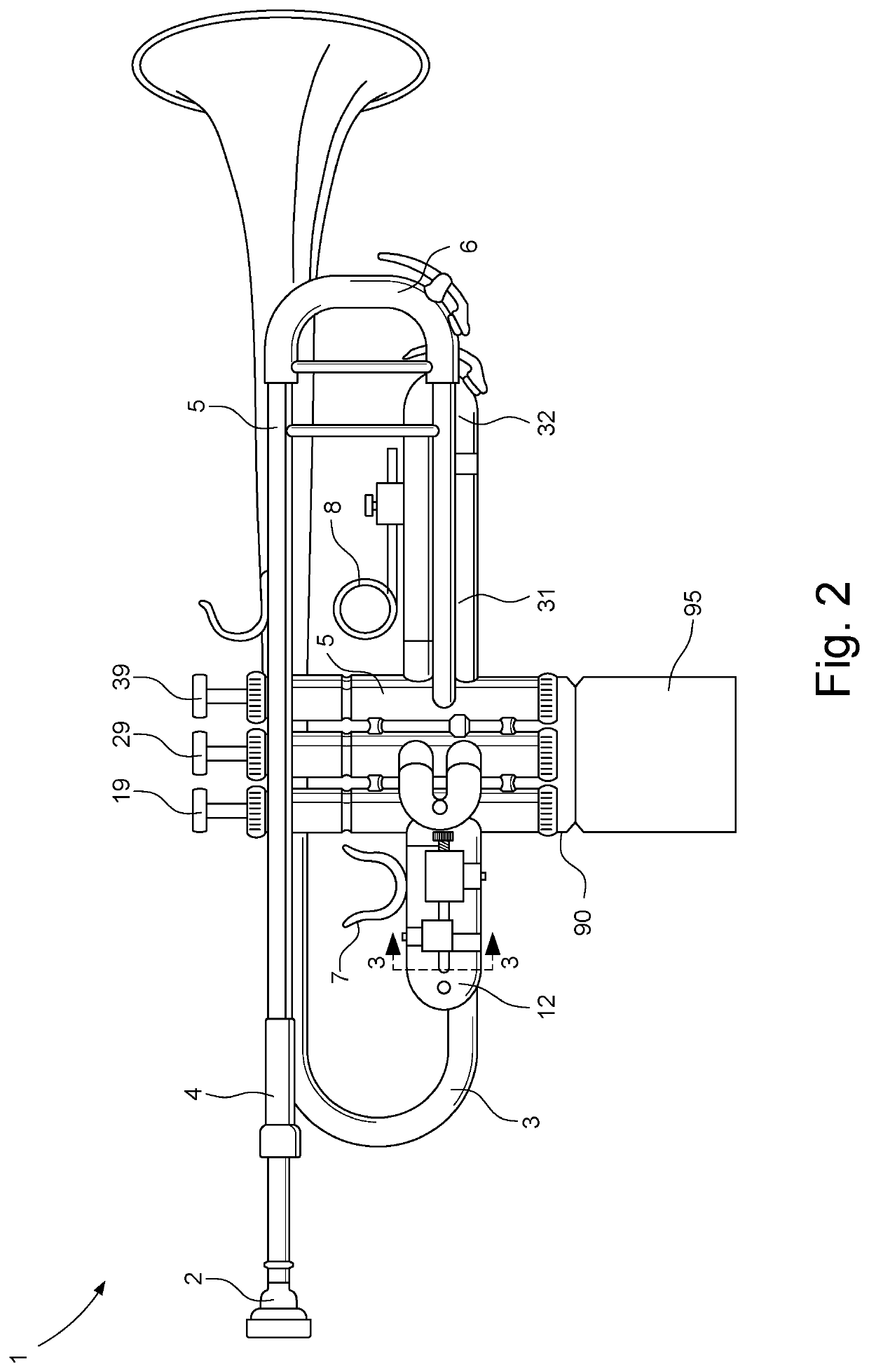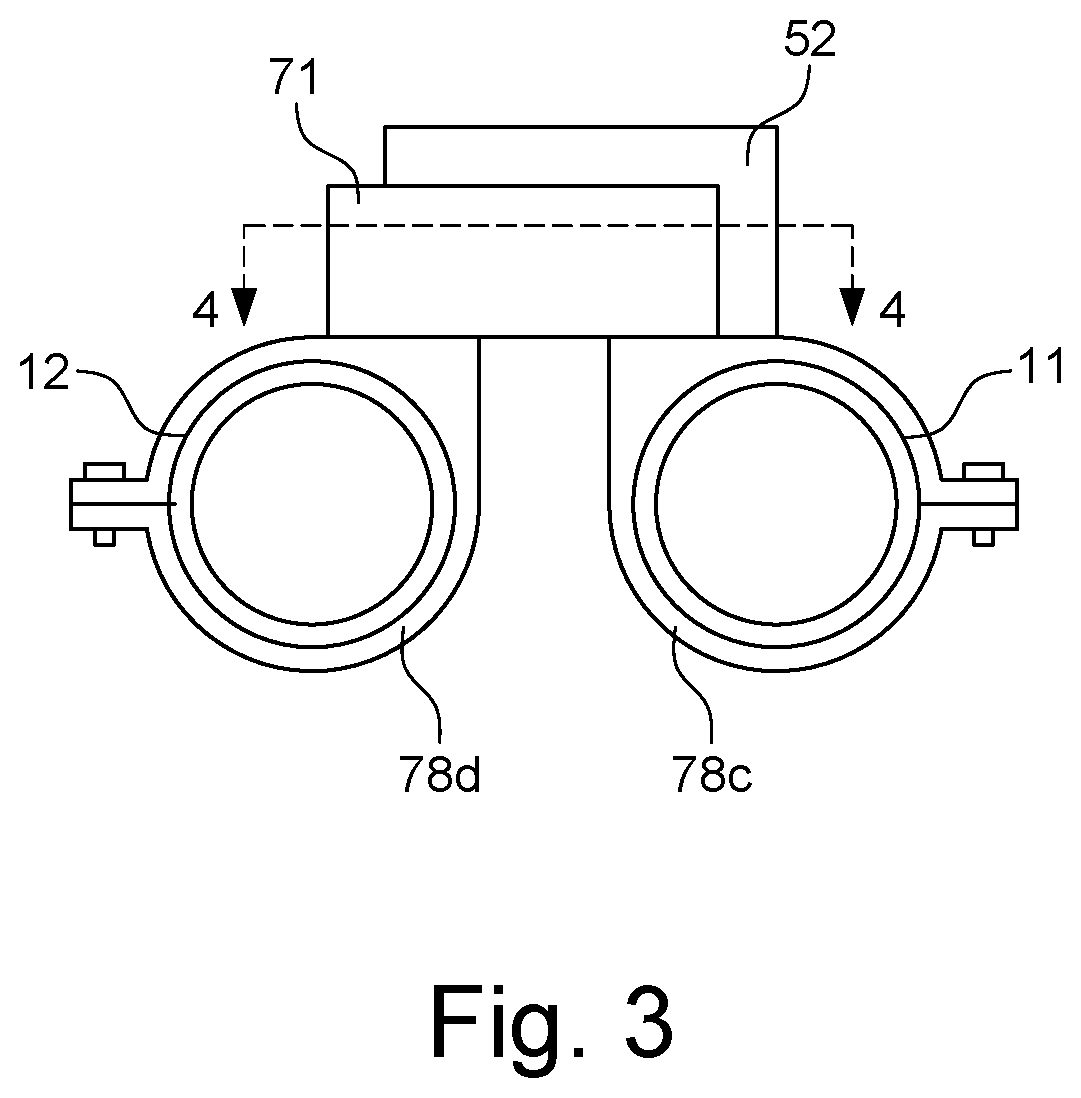Pitch adjustment for a valve brass musical instrument
a brass musical instrument and pitch adjustment technology, applied in the field of brass instruments, can solve the problems of inconvenient change between slide positions, instruments producing high notes, instruments producing low notes, etc., and achieve the effect of reducing pitch, accurate initial adjustment of tubing, and reducing the pitch
- Summary
- Abstract
- Description
- Claims
- Application Information
AI Technical Summary
Benefits of technology
Problems solved by technology
Method used
Image
Examples
Embodiment Construction
[0029]FIG. 1 shows a side view of a conventional B b trumpet 1 having a mouthpiece 2 and a main tube 3 leading to a bell 9. The main tube 3 has a mouthpiece receiver 4, a lead pipe 5, and a main tuning slide 6 for tuning the trumpet. The trumpet also includes three piston valves, a first valve 10 for selectively diverting air flow to a first additional tube 11, a second valve 20 for selectively diverting air flow to a second additional tube 21, and a third valve 30 for selectively diverting air flow to a third additional tube 31. The valves 10, 20, 30 and additional tubes 11, 21, 31 allow for the length of the tubing through which the air flow passes between the mouthpiece 2 and bell 9 to be changed, which changes the pitch of the trumpet 1 within a harmonic partial.
[0030]The trumpet also includes three valve keys for engagement by the player's finger to selectively operate each valve, a first valve key 19 that when depressed moves the first valve 10 into a position in which it dive...
PUM
 Login to View More
Login to View More Abstract
Description
Claims
Application Information
 Login to View More
Login to View More - R&D
- Intellectual Property
- Life Sciences
- Materials
- Tech Scout
- Unparalleled Data Quality
- Higher Quality Content
- 60% Fewer Hallucinations
Browse by: Latest US Patents, China's latest patents, Technical Efficacy Thesaurus, Application Domain, Technology Topic, Popular Technical Reports.
© 2025 PatSnap. All rights reserved.Legal|Privacy policy|Modern Slavery Act Transparency Statement|Sitemap|About US| Contact US: help@patsnap.com



